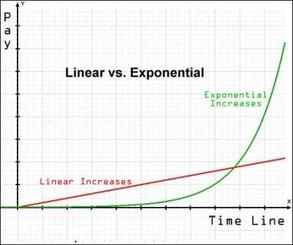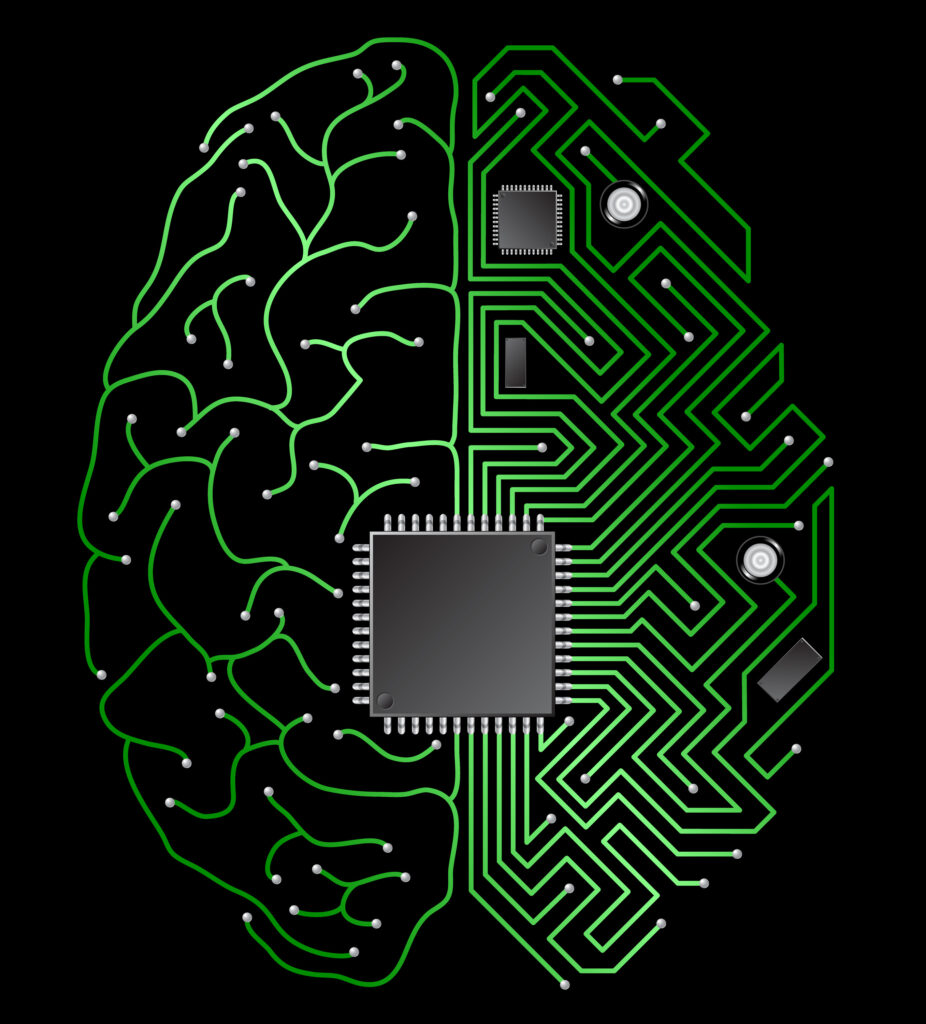(Originally posted on July 25, 2018)
“How far is the future?” seems like a nonsensical question. It’s not, however. “The future” is not merely rotations of the planet yet to come, it’s a future roadmap of human development. It’s the advancement and evolution of our civilization.
How long will it take for fundamental changes to occur?
If you wish to get philosophical about it, fundamental changes occur around us all the time. I’m not trying for a philosophical bent, however. I mean concrete, physical, fundamental changes.
What the hell am I talking about? For starters, how about nanotechnology reshaping our minds and bodies. Artificial intelligence running vast swaths of our society. Perfect control over our genetic structure. Robots in everyday tasks.
You know, the far future that Hollywood has declared will happen at some misty point in the far future.
It’s not that far.
Pennies to a millionaire
An important thing to understand is the deceptively powerful impact of logarithmic (or exponential) increases.
I always remembered this from a kid. In the original Star Trek series episode “Where No Man Has Gone Before” Sulu discusses the increasing power of their mutant crewmember. He explained that his power was increasing exponentially. His example was having a penny, then doubling the amount of money every day–ending up a millionaire within a month. (Try it.)
That explanation stuck with me my entire life. It’s an amazing (and slightly scary) concept.

That’s basically what’s happening now. A linear scale (1, 2, 3, 4, 5…) resembles a logarithmic scale (2, 4, 8, 16, 32…) until a certain point in its advance, where it takes off like a rocket–the “dogleg” point. Our advance–fueled by computing power–has been advancing exponentially for decades now. We’re rapidly approaching the “dogleg”.
What happens after that? Things start getting crazy.
In case you’re unfamiliar, this is merely an extrapolation of Moore’s Law.
But what about…?
I hear you saying: “But everything isn’t computers! Just because computers are increasing exponentially, it doesn’t mean the rest of society will!”
A fair point, except…computers are the bedrock of our society. Computers are a bootstrap technology. Essentially they make doing and creating everything else easier–including the next generation of computers. Which, in turn, will make creating the next generation easier…etc., etc.
And we use computers for virtually everything.
Every development builds onto the next development. Often, unexpected synergistic effects happen that create something no on envisioned, which, in turn, creates other new things. With the internet, these discoveries are meeting and reproducing so very fast, that it is reaching the level that no one can possibly keep track of it all. Also, no one can possibly realize the implications of everything they do know.
Unless we get smarter.
Hacking our minds
What if you could upgrade your brain? Take a pill and double your mental capacity? Triple?

You’ll be able to. Either it will be through altering DNA and brain chemistry or though implanting computers inside your brain–or both.
We’ll get smarter. We won’t have to wait for glacial evolution to make us smarter–we’re going to hack evolution. Evolution is too damn slow to keep up with technological problems of 7+ billion people.
Now imagine AI combining with that. A computer 10x as intelligent creating new technology at lightning speed. Which we can also use to make ourselves smarter still.
Progress will advance with the speed of a wind-driven wildfire.
The fabrication revolution
You combine all this with fabrication technology, and the picture becomes complete.
Up until now, increases in technology were always slowed by the requirement of macro-scale manufacturing. You couldn’t simply create a new invention and immediately have it available. It had to be put through tests, models and feasibility studies. Then it had to be financed and produced. These are all very slow and expensive.
Suppose you could invent something and immediately create it?

Fabricators (3D printers) are the beginning of this. Still somewhat crude and expensive, they are advancing rapidly. However, the true revolution will occur when the first nanotech assemblers are created. After that, well, hold onto your hat. The world just shifted into high gear. Once you have the technology to reshape matter at a molecular scale, it increases all possibilities tenfold.
Faster and faster.
What happens afterward?
When we do reach this “dogleg”, what happens to the world? Society? Our humanity?
I have no idea. Remember when you were a young kid? Remember so many ideas you had then that you realize in retrospect were incredibly simplistic and silly? Then you grew up.
We’ll grow up. More. A lot more.

As to when it happens…just take a look at the world around you. Do you have any idea how fast it’s moving? Poor kids in the first world have more computing power in their pocket than NASA did during the Apollo Mission–and they can connect with anyone on Earth.
The future? You’re soaking in it.



